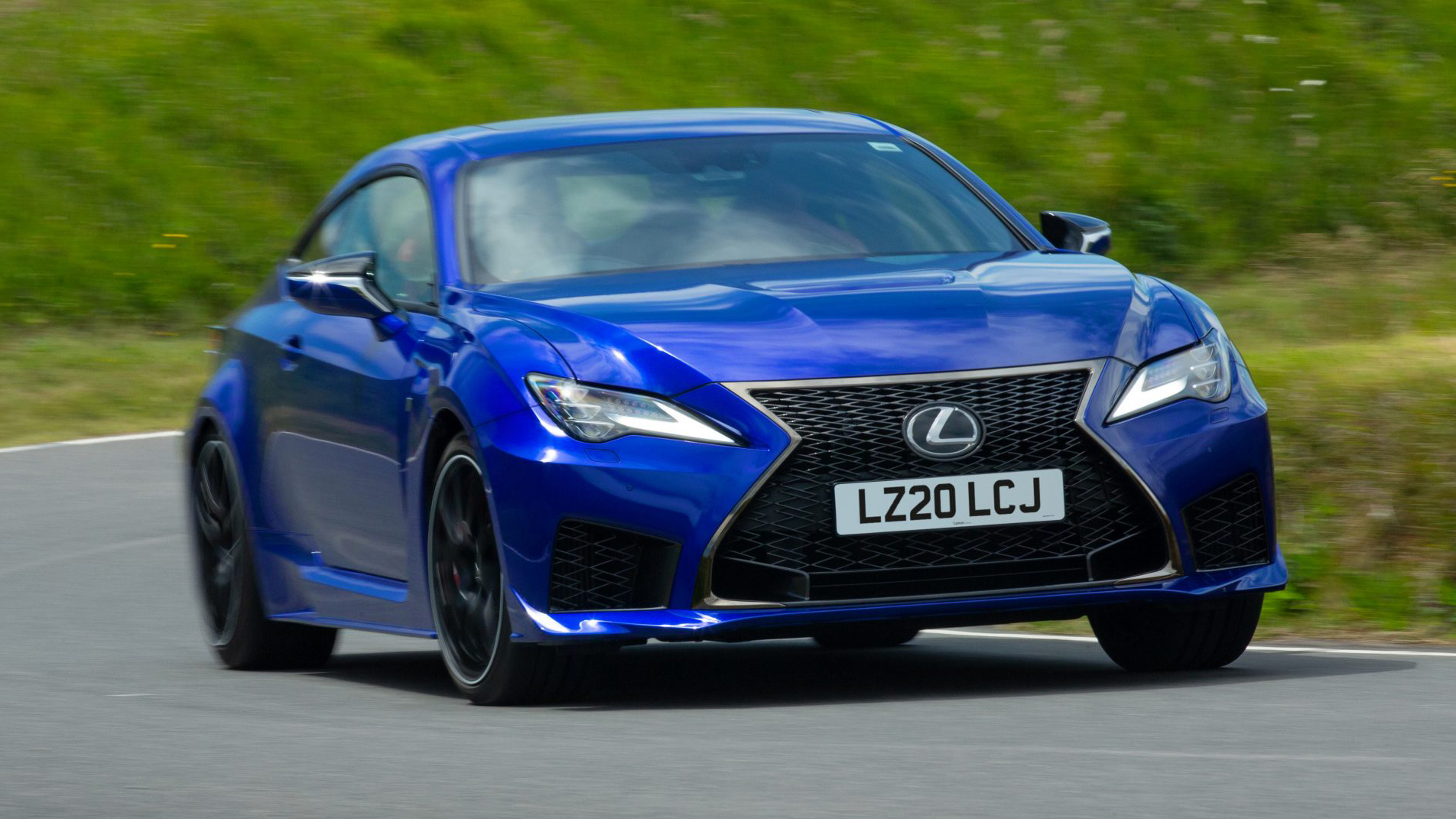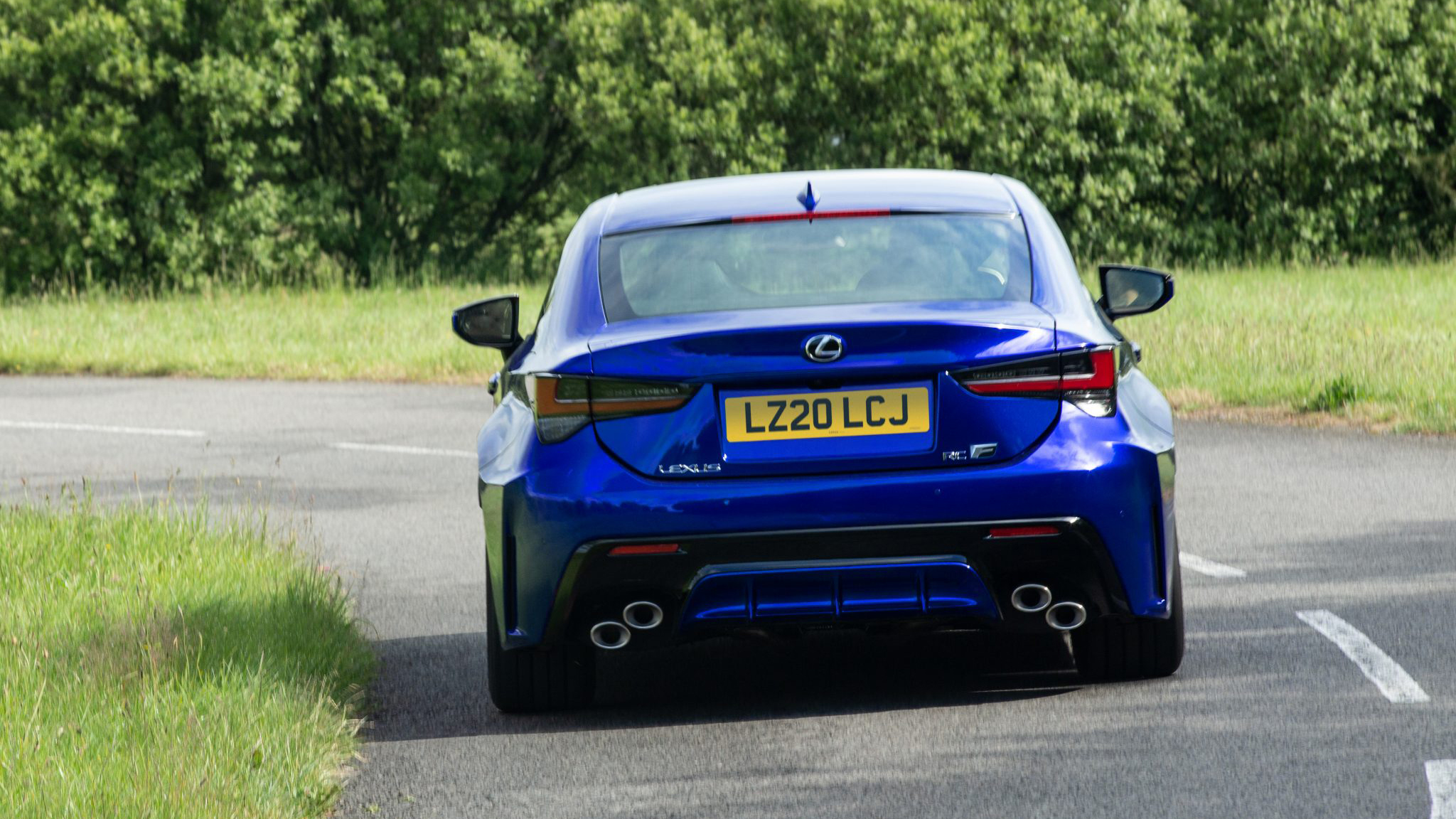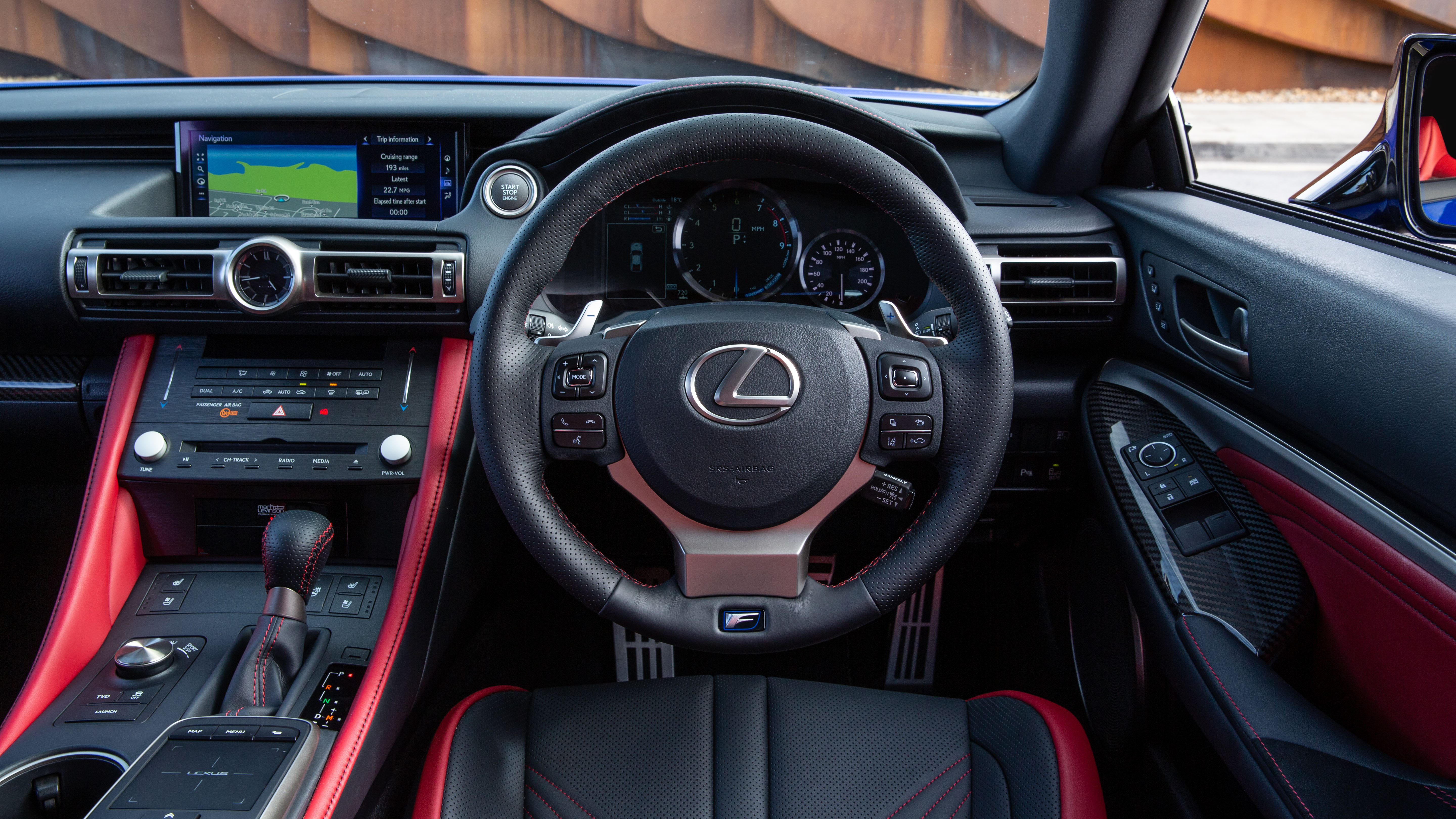
Driving
What is it like to drive?
Be warned: the RC F comes with MODES. Lots of them. There’s a round knob in the middle that switches between Normal (which is, erm, normal), Eco (again, pretty self-explanatory), Sport S, Sport S+ and Snow. Sport S changes the dial readout, changes down gears during hard braking, and holds onto them for longer during acceleration. Sport S+ goes further with even quicker shifts, more steering weight, and activates the Sport mode in the VDIM – Vehicle Dynamics Integrated Management – system.
Ah yes, VDIM. There are four modes for that, too – Normal, Sport, Off and Expert – while the torque vectoring diff itself has three modes (standard, slalom and track). Basically, you can adjust the thing to your heart’s content. Though… there’s no great difference between the hardest ones.
That sounds pretty techy. Is it all like that?
On the road – which is likely where the majority of RC F buyers will use the standard car – it’s a docile, supple and compliant thing to drive when your hair’s not on fire. The driving position is spot on, the view outside is good, it’s well damped and it doesn’t bounce you all over the road. There’s actually no real indication that a 5.0-litre V8 lies in wait up front. Indeed, during sedate driving, the engine runs on a more economical cycle than when driving as though you’re in a movie chase scene. You could look at it in a more cynical way – why pay so much for a V8 if you can’t tell you’re in a V8?
Well, dial it up through the modes and – on a fast road – it’s accurate, stable and rewarding. Still very muscle car-like, though. There’s no great information dump from the steering or the front end but it’s sharp enough, there’s a decent amount of grip (less so if you loosen off the shackles, but best do that on track), and progress is swift, if not the banzai rapidness of its turbocharged rivals. You can feel its weight too – at 1,715kg it’s on the heavier side of this class (the Carbon edition only saves 10kg too, while the Track Edition comes in under 1,700kg) – and the paddle-controlled eight-speed auto clunks through shifts fairly slowly. Everything feels a little… last generation.
And that is likely to polarise your view on the RC F. Yes, there’s nothing at low revs, but keep it in the right gear and that engine singing above 4,000rpm, and it accelerates cleanly, accurately and to a delightful soundtrack. There’s massive fun to be had in repeatedly redlining the RC F, because it sounds so old-school. It’s a high-pitched, more frenzied note than, say, the old 6.2-litre V8 AMG used to put in previous C63s, and that’s a car that’ll soon come with a four-cylinder engine mated to an electric motor. Yawn.
What else do I need to know?
The BMW M4 is a rabid dog in comparison to the RC F. A 0-62mph time – even with launch control – of 4.3 seconds in the Lexus compares to a conservative 3.9 seconds for the rear-wheel drive M4 Competition. And while it may not be a looker, the German’s turbocharged six-cylinder plant would see it sprint cleanly off into the distance; its power more deployable, more of the time.
Think of the RC F more along the lines of a Japanese muscle car – something you choose because you want a Japanese muscle car, and not a point-and-squirt coupe, and it makes some sense. Got a lot of charm, this thing.
Featured







